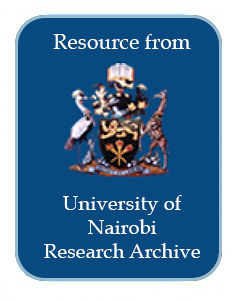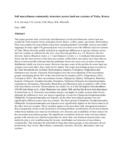Location
Our Vision is to be a world-class university committed to scholarly excellence.
Our Mission is to provide quality university education and training and to embody the aspirations of the Kenyan people and the global community through creation, preservation, integration, transmission and utilization of knowledge.
Core Values
In order to realize the above vision and mission, certain shared values shall be nurtured. There is great need for the University to be guided by the right values derived from the virtues and moral standards of the Kenyan and wider society.
Core Functions
Teaching and Learning: The university offers innovative , relevant and market driven academic programmes , both at undergraduate and postgraduate levels with inbuilt quality control systems the university also provides an environment and policy framework for undertaking high quality and relevant research
Members:
Resources
Displaying 136 - 140 of 298What Would it Take to Realise the Promises? Protecting Women’s Rights in the Kenya National Land Policy of 2009
Land is a critical resource in Kenya, having economic, social, political,
environmental and cultural significance. Kenya’s population continues to rely
on land for both subsistence and economic activities. In fact, the increase
of the population from about 20 million people in the 1960s to about 40
million currently, has put enormous pressure on land. Only a third of Kenya’s
land is arable while the rest is arid and semi-arid. With most Kenyans still
living off the land, contestations over access to, control over and ownership
Comparative description of land use and characteristics of belowground biodiversity benchmark sites in Kenya
The Kenyan below-ground biodiversity (BGBD) team selected two benchmark sites for the inventory of soil biota which were the Irangi and Ngangao forest sites located in Mount Kenya region of Embu District and the Taita Hills area of Taita Taveta District. These two sites are found in biodiversity hotspots that support rare and endemic plant and animal species. The larger Embu and Taita benchmark areas were demarcated
into sampling areas which are referred to as windows ’W’ in this study. Site characterization was carried out using the method provided by FAO-UNESCO for
Diversity of nematode destroying fungi in Taita Taveta, Kenya
The diversity of nematode destroying fungi in Taita Taveta, Wundanyi division, Coast
Province, Kenya, was investigated between May 2006 and December 2007 aiming at harnessing
their potential in the biological control of plant parasitic nematodes in the area.
Given that the intensity of land cultivation is continually increasing in the study area, it is
prudent to document the status of the nematode destroying fungi before the remaining
forest habitats are ultimately disrupted. Soil samples were collected from forest, maize/
The Impacts of organisational culture in the performance of land administration institutions
Land as a resource and factor of production plays a major role in the development of a country. The management and administration of land is
done through structures and processes that are governed by the existing institutional and regulatory frameworks. In most of the countries, these
processes are undertaken by public service institutions (central and local government), which are not only the custodians of public land but of
records and information pertaining to land rights. With the world becoming a global village, it has become apparent that the performance of
Soil macrofauna community structure across land use systems of Taita, Kenya
This paper presents data on diversity and abundance of soil macrofauna in various land use systems in Taita (natural forest, plantation forest, fallow, coffee, napier, and maize, Horticulture. Each was sampled for macrofauna using three sampling methods (monolith,
transect and pitfall trapping). Seventy eight (78) genera/species were recorded across the different land use systems of Taita. Rényi diversity profile indicated no significant differences in species richness across land use systems as reflected by the very close






